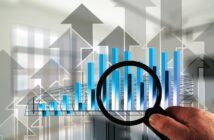credit:https://pixabay.com/
Economic uncertainty has always been a critical factor in shaping consumer behavior. Fluctuations in market conditions, inflation, employment instability, and geopolitical tensions influence how people spend, save, and invest. This article delves into the psychological aspects of economic uncertainty, analyzing how fear, confidence, and market instability impact financial decision-making.
1. The Fear Factor: How Uncertainty Triggers Conservative Spending
During economic downturns, fear acts as a powerful motivator that shifts consumer behavior toward caution and restraint. Faced with uncertainty about future income or financial stability, individuals instinctively cut back on non-essential purchases, seeking to protect themselves from potential loss. Behavioral economics, particularly the loss aversion theory, highlights that the psychological pain of losing money or resources outweighs the pleasure of gaining them, making people highly risk-averse in times of economic instability (Kahneman & Tversky, 1979). This aversion to loss drives consumers to prioritize necessities over luxuries, suppressing demand for discretionary goods and services. As a result, businesses experience reduced sales and revenue, often leading to cost-cutting measures, layoffs, and further economic contraction. In this climate of fear, not only do consumers shift their spending habits, but their overall confidence in the economy weakens, perpetuating a cycle of diminished growth and stability.
2. Confidence and Its Role in Consumer Decision-Making
When consumer confidence is high, it acts as a powerful catalyst for economic growth by encouraging individuals to make financial commitments, whether through spending or investing. People tend to feel secure in their financial futures when they hear positive news like job growth or a stable stock market, which in turn makes them more likely to buy goods, invest in assets like homes and cars, and even start new ventures. This collective optimism drives demand, leading to more jobs, business expansion, and overall economic vitality. Conversely, a sudden decline in confidence can have a profound impact, as fear and uncertainty take hold, making consumers hesitant to spend or invest. This shift can create a ripple effect, reducing demand, slowing down economic activity, and potentially triggering recessions if confidence doesn’t rebound quickly. The Consumer Confidence Index (CCI) serves as a critical barometer, reflecting this delicate balance between optimism and fear that shapes the economy.
3. The Impact of Market Instability on Investment and Spending
During financial downturns, market volatility and inflation uncertainty significantly alter consumer behavior, often prompting a shift in investment strategies. According to prospect theory, individuals are more averse to losses than they are motivated by gains, which leads them to prioritize risk aversion when faced with economic instability (Barberis, 2013). As a result, consumers tend to retreat from more volatile investments, such as stocks, and instead bolster their cash reserves to preserve wealth. Furthermore, in response to inflation fears, there is a marked shift toward tangible assets like gold and real estate, which are perceived as safer havens during periods of economic uncertainty. These assets, which historically retain value or appreciate over time, provide a psychological buffer against the erosion of purchasing power, helping individuals safeguard their financial stability while navigating unpredictable economic climates.
4. Behavioral Biases in Economic Decision-Making
Cognitive biases, particularly during economic stress, skew decision-making, amplifying irrational behavior that can severely impact both individuals and markets. The Herd Mentality drives people to mimic the actions of others, often resulting in widespread panic or overconfidence—such as mass stock sell-offs or unnecessary consumer hoarding—based on the assumption that others know more or are acting wisely. Present Bias shifts focus away from long-term goals, compelling individuals to make financially reckless choices that satisfy immediate desires but neglect future security. Similarly, the Overreaction Bias leads to impulsive decisions in response to news, amplifying market volatility, as emotions outweigh rational assessments. Together, these biases distort judgment, causing a cascade of decisions that harm personal finances and destabilize broader economic systems.
5. The Role of Government Policies in Consumer Spending Patterns
Government interventions like stimulus checks, interest rate adjustments, and unemployment benefits play a crucial role in shaping consumer behavior and stabilizing the economy, particularly during times of economic distress. When the COVID-19 pandemic caused widespread uncertainty, financial aid programs provided an immediate lifeline for households, resulting in a surge in consumer spending, which helped mitigate the economic downturn. These policies, by directly increasing disposable income or lowering borrowing costs, instilled a sense of financial security and confidence among consumers, encouraging them to continue spending rather than hoarding cash. Moreover, such interventions reduce the fear of financial instability, which can otherwise lead to drastic declines in consumption. By acting as a safety net, these measures not only support individual well-being but also strengthen the broader economy by ensuring a steady flow of demand for goods and services.
6. Coping Strategies: How Consumers Adapt to Uncertain Economic Times
In times of economic instability, individuals often adopt financial strategies to safeguard their financial health. By increasing savings, they create a financial cushion that can absorb shocks such as job loss or unexpected expenses, ensuring they don’t have to rely on debt. Diversified investments are another key strategy, where people spread their money across various sectors—such as stocks, real estate, or bonds—to reduce exposure to any single market’s downturn, thereby stabilizing returns. Additionally, minimalist consumption focuses on curbing excess spending by emphasizing the importance of essentials, distinguishing between wants and needs, and fostering mindful financial habits. Together, these strategies help individuals navigate uncertainty by providing resilience against unforeseen changes in the economy.
Conclusion
Economic uncertainty profoundly influences consumer spending behaviors, driven by fear, confidence, and market instability. Understanding these psychological triggers and behavioral biases can help individuals and policymakers make informed financial decisions. By implementing strategic spending habits and investment approaches, consumers can better navigate periods of economic unpredictability.
References
- Barberis, N. (2013). Thirty Years of Prospect Theory in Economics: A Review and Assessment. Journal of Economic Perspectives, 27(1), 173-196.
- Baker, S. R., Bloom, N., Davis, S. J., & Terry, S. J. (2020). COVID-Induced Economic Uncertainty. National Bureau of Economic Research.
- Deaton, A. (2012). The Financial Crisis and the Well-Being of Americans. Oxford Economic Papers, 64(1), 1-26.
- Kahneman, D., & Tversky, A. (1979). Prospect Theory: An Analysis of Decision under Risk. Econometrica, 47(2), 263-291.
- Thaler, R. H., & Sunstein, C. R. (2008). Nudge: Improving Decisions About Health, Wealth, and Happiness. Yale University Press.



